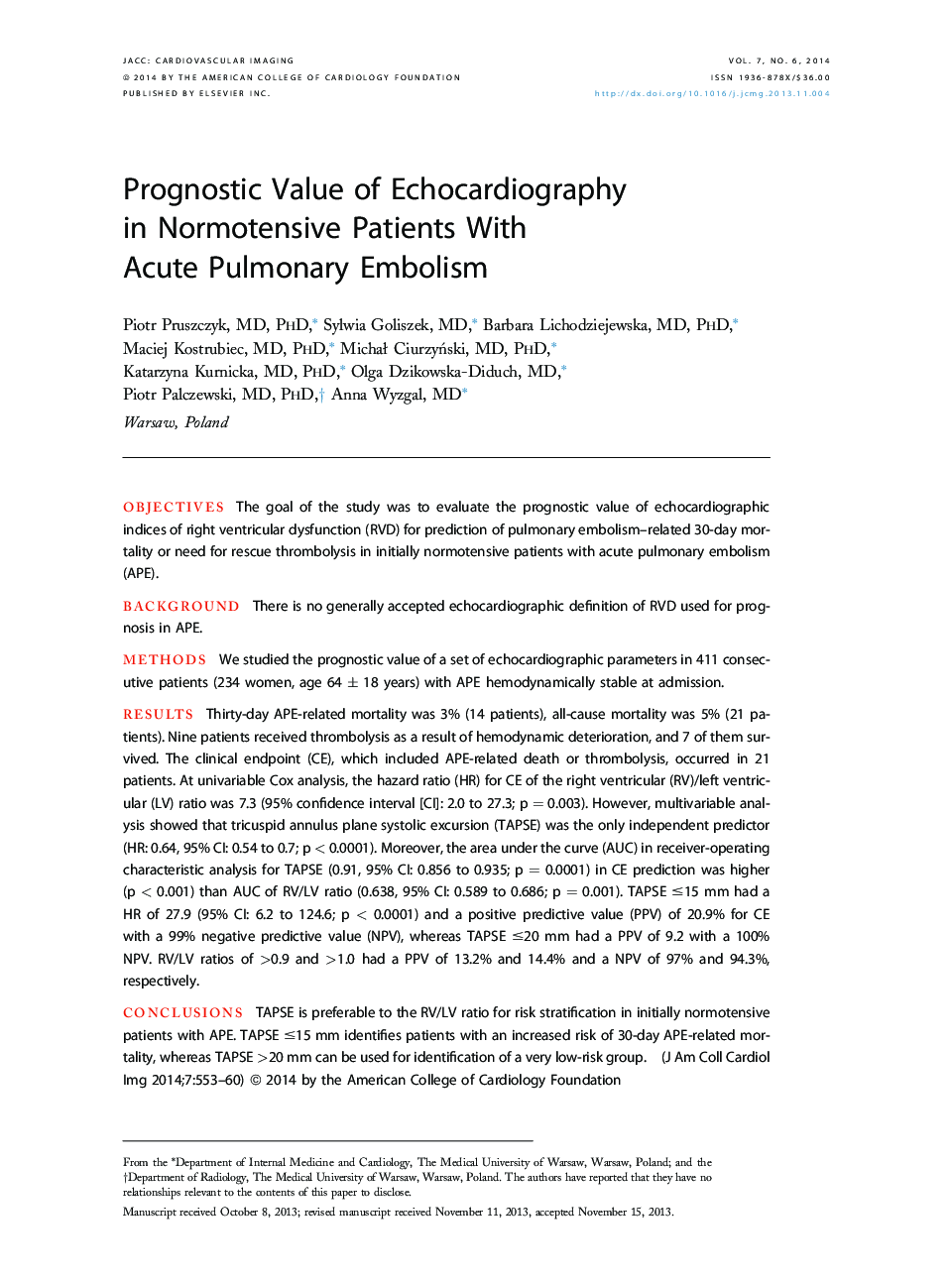| Article ID | Journal | Published Year | Pages | File Type |
|---|---|---|---|---|
| 2938039 | JACC: Cardiovascular Imaging | 2014 | 8 Pages |
ObjectivesThe goal of the study was to evaluate the prognostic value of echocardiographic indices of right ventricular dysfunction (RVD) for prediction of pulmonary embolism–related 30-day mortality or need for rescue thrombolysis in initially normotensive patients with acute pulmonary embolism (APE).BackgroundThere is no generally accepted echocardiographic definition of RVD used for prognosis in APE.MethodsWe studied the prognostic value of a set of echocardiographic parameters in 411 consecutive patients (234 women, age 64 ± 18 years) with APE hemodynamically stable at admission.ResultsThirty-day APE-related mortality was 3% (14 patients), all-cause mortality was 5% (21 patients). Nine patients received thrombolysis as a result of hemodynamic deterioration, and 7 of them survived. The clinical endpoint (CE), which included APE-related death or thrombolysis, occurred in 21 patients. At univariable Cox analysis, the hazard ratio (HR) for CE of the right ventricular (RV)/left ventricular (LV) ratio was 7.3 (95% confidence interval [CI]: 2.0 to 27.3; p = 0.003). However, multivariable analysis showed that tricuspid annulus plane systolic excursion (TAPSE) was the only independent predictor (HR: 0.64, 95% CI: 0.54 to 0.7; p < 0.0001). Moreover, the area under the curve (AUC) in receiver-operating characteristic analysis for TAPSE (0.91, 95% CI: 0.856 to 0.935; p = 0.0001) in CE prediction was higher (p < 0.001) than AUC of RV/LV ratio (0.638, 95% CI: 0.589 to 0.686; p = 0.001). TAPSE ≤15 mm had a HR of 27.9 (95% CI: 6.2 to 124.6; p < 0.0001) and a positive predictive value (PPV) of 20.9% for CE with a 99% negative predictive value (NPV), whereas TAPSE ≤20 mm had a PPV of 9.2 with a 100% NPV. RV/LV ratios of >0.9 and >1.0 had a PPV of 13.2% and 14.4% and a NPV of 97% and 94.3%, respectively.ConclusionsTAPSE is preferable to the RV/LV ratio for risk stratification in initially normotensive patients with APE. TAPSE ≤15 mm identifies patients with an increased risk of 30-day APE-related mortality, whereas TAPSE >20 mm can be used for identification of a very low-risk group.
